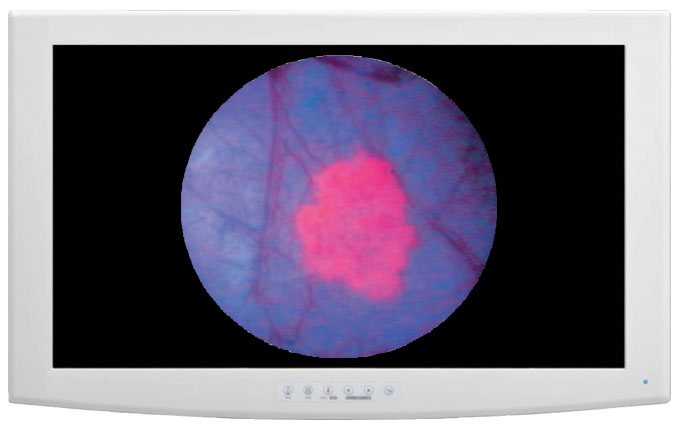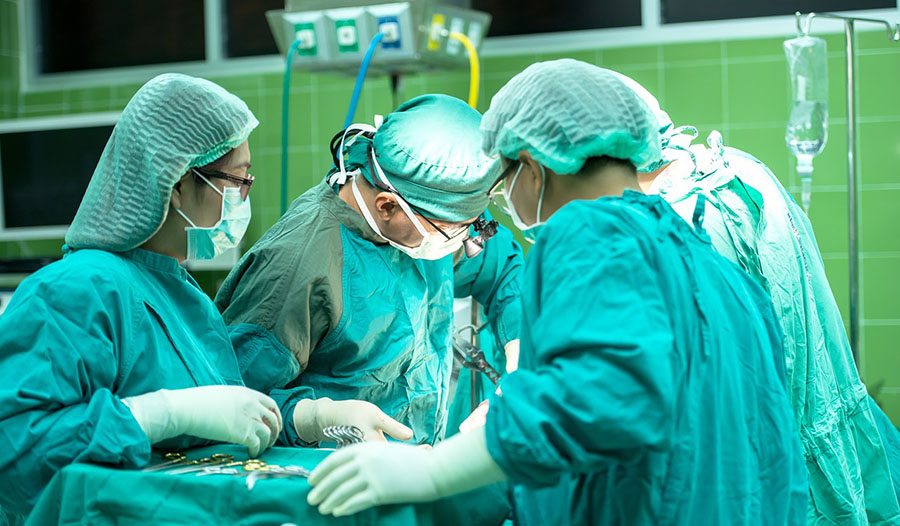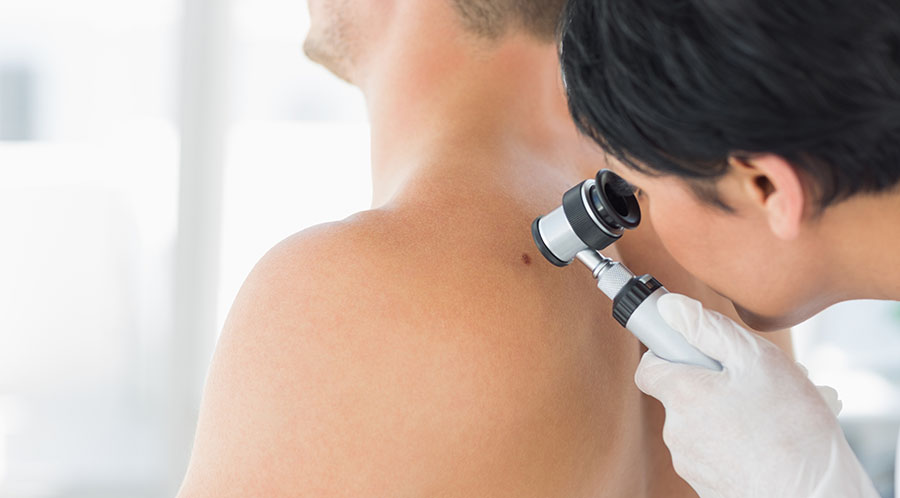The Life Sciences Report: You focus on uncovering new, unfamiliar opportunities for investors. How do you pick a name?
Caroline Corner: It doesn't do any good for an analyst to cast a voice on a highly covered name. I look for companies with unique products for existing large markets. Maybe a company does something different that will leverage entry into a market and result not only in revenue ramping but also in the potential for becoming an acquisition target.
TLSR: Are you looking for companies with an exit strategy?
CC: Most of the time, but not always. It is more important to have options. Can this company go it alone? Yes, it can. Is it also a company that could be acquired down the road at a premium by a larger company? That's an opportunity as well. I am not looking for acquisition targets exclusively, but that option certainly helps me assign value to a company.
TLSR: A company that serves the needs of the vascular surgeon, for instance, can manage a very small sales force. But sales force management is generally a major problem for small companies, isn't it?
CC: Yes. It is tough to compete when you are a small medical device player competing against a powerhouse such as Medtronic Inc. (MDT:NYSE), Stryker Corp. (SYK:NYSE), Covidien Ltd. (COV:NYSE) or another large-cap company. But if a smaller company has a differentiated product, is approaching a smaller or niche market and has an energized sales force, it can compete. Smaller sales forces usually consist of people who are well trained and very excited about their products. That is something I look for when I'm talking to salespeople.
TLSR: What do you talk to salespeople about?
CC: When I talk to salespeople at meetings or trade shows, often they are introducing customers and encouraging me to talk to them. You can tell if someone is excited about a product. That helps the product get adopted. I see that enthusiasm with the Mela Sciences Inc. (MELA:NASDAQ) sales force, which is in a controlled launch of the MelaFind system, a screening technology for melanoma. The salespeople have something new and unique with which to approach dermatologists, and they are also engaging physicians who aren't in the geographically constrained initial target audience. That's pretty exciting.
"If a smaller company has a differentiated product, is approaching a smaller or niche market and has an energized sales force, it can compete."
Uroplasty Inc. (UPI:NASDAQ) has a unique, exciting product that relieves symptoms of overactive bladder. I saw it in May at a trade show. The sales force is out doing demonstrations and engaging people, even doctors in areas that don't yet have reimbursement for the product. There are only a couple of areas in the U.S. that don't, but the sales team is talking to those doctors, too. They are really excited about getting the product adopted.
TLSR: Let's stay with these two companies. Mela has been weak relative to the other companies in your coverage. It's down about 28% over the past four weeks. Have there been any particular issues?
CC: I don't think so. With Mela there's impatience on the investor side because it is doing a controlled launch, which I personally think is a smart idea. The company is rolling out 200 units of the MelaFind system in the first year, exclusively to dermatologists in the Northeast U.S. It is trying to figure out where the new screening system fits into the treatment paradigm within physicians' offices, and making sure it has all the details hammered out before it approaches a broader audience. The company is putting the product into the hands of the right people to make sure the diagnostic test is performed correctly. That makes a lot of sense.
TLSR: And, unlike an interventional product, it is very easy to demonstrate, isn't it?
CC: Yes. The company has the system set up at trade shows and meetings.
The system doesn't tell you yes, you have cancer or no, you don't have cancer. It gives physicians more information about whether or not they should perform a biopsy. Specifically, Melafind looks at disorganization of cells from imaging and recommends biopsy if something compares to existing melanoma images in an unfavorable way. Physicians, historically, are not very good at determining with their eyes and magnification what is, or is not, melanoma. We have a lot of unnecessary biopsies because doctors want to err on the side of caution rather than missing cancers. MelaFind is designed to help reduce the rate of unnecessary biopsies and to give the patient and physician more confidence in the process.
TLSR: MelaFind systems are only about $7,500. If a large physician practice management group buys one and likes it, is it likely to buy several more for the same freestanding practice?
CC: It certainly could. Among other things, during this launch Mela hopes to figure out whether a physician is more likely to buy a second machine or to wheel a single unit from room to room. I've talked to physicians who have had their own machines and I've talked to residents who have been sharing one. That's another reason why this controlled launch is important.
TLSR: Is there a reimbursement code for this device?
CC: No, there isn't. Interestingly, in this situation, physicians don't want reimbursement. Dermatologists are used to having people pay out-of-pocket for various procedures, whether it's laser hair removal or some other aesthetic procedure. The company could go for reimbursement after it has collected a critical mass of data that indicates Melafind is actually saving lives. But as a screening test, the doctors I've spoken with would rather tell their patients: "If you want MelaFind, you have to pay $200 out of pocket." The doctors I've spoken with have had very little pushback—if any—especially when a patient may avoid a scar from a biopsy.
TLSR: You have Mela rated Buy with a target price of $7. That is more than 100% implied return from this point. Are your target prices one-year or six-month targets?
CC: One year.
TLSR: You mentioned Uroplasty Inc. You have it rated a Buy with a target price of $5. Does this company have one product or two?
CC: Two. The secondary product is a urethral bulking agent, which is not a growing market but gives the company's salespeople something else to offer. Uroplasty's main product is the Urgent PC neuromodulation system for overactive bladder.
TLSR: Is it percutaneous?
CC: Yes. Essentially, the system works by delivering neuromodulation through the tibial nerve. The patient sits in a chair and a needle about the size of an acupuncture needle—very small—is inserted into the ankle near the tibial nerve. An electrical charge is delivered to the nerve for 30 minutes. The procedure is done once a week for 12 weeks, and after that about once a month. It is effective for patients who have had bad experiences with drug therapies, which have a lot of side effects.
Allergan Inc. (AGN:NYSE) is also in this space and is working with Botox (onabotulinumtoxinA) for this indication, essentially paralyzing part of the muscles to treat the overactive bladder. Sometimes this works too well, and the patient needs a catheter. The self-catheterization training required is a big turnoff for some patients.
This is a big market with lots of players, but there are lots of ways to target the patient population, especially those seeking options when drugs don't work. I think Uroplasty is uniquely positioned when you consider the side effects of other offerings.
TLSR: Urgent PC is not technique-sensitive, at least relative to other procedures performed in the urologist's practice. Has that been a positive for this company?
CC: Certainly. Most of the time Urgent PC is run by a nurse or a physician assistant. It is a good way for an office to make money without using a doctor's time. A practitioner can also do multiple procedures at one time in a single room. Just set up the machines and patients can sit with one foot up on a pile of magazines while they are being treated.
TLSR: Similar to an infusion setting?
CC: Exactly.
TLSR: Is there another favorite company you would like to mention?
CC: I like Cardiovascular Systems Inc. (CSII:NASDAQ), which has developed catheter-based technology for treating peripheral artery disease in a below-the-knee intervention. The company has good growth potential going forward. I've also covered Spectranetics (SPNC:NASDAQ), which is in the same space. Spectranetics is positioned well within its niche too. I like the peripheral vascular area because it addresses a large unmet need. There are many players, but there is plenty of room in the market. Cardiovascular Systems has a very nimble product for removing plaque from arteries below the knee. Specifically, it works on heavily calcified plaque, which is something other companies struggle with.
TLSR: What are the growth centers in this company?
CC: It has been making good inroads lately in the physicians' office market, targeting about 200 office labs. The product is easy to maneuver around an office, consisting of a hanging bag of saline and the handheld device for accessing the arteries. It's uniquely positioned with those features.
These issues—plaque, calcium, thrombus buildup in the arteries—occur in people with compromised vascular systems, which means physicians have a lot to deal with and potential comorbidities. They have different tools targeting specific issues at their disposal. Cardiovascular Systems has a nice niche and is getting the technology out there.
On the theme of controlled launches, the company has tried to get the product into the right people's hands. That way it can produce good outcomes and avoid adverse events that might occur if an untrained user were to use the device incorrectly. Getting it to thought leaders has been important for the company.
Cardiovascular Systems is also seeking approval for use of its product in the coronary arteries. It has a trial ongoing for that application. The company plans a controlled launch if and when the application gets approval. Again, it would want to get the product into the right people's hands so it can approach other doctors with good cardiac surgery outcomes.
TLSR: Do you think Cardiovascular Systems would be a good fit for a merger with Spectranetics?
CC: I've spoken to Spectranetics about that, and the company acknowledges that in 10–20% of cases, vessels are too calcified for its excimer laser to treat effectively. The Spectranetics laser has utility treating conditions that Cardiovascular Systems' product might not work as well for, such as fibrotic plaque. The potential for a merger is there, but you also have to look at Cardiovascular Systems as a potential target for a company like Covidien, which acquired ev3 Inc., which previously merged with FoxHollow Technologies. Covidien now has the FoxHollow product for debulking above-the-knee plaque, but its efforts below the knee have not been very successful. You can see another exit there, with a larger player coming in.
TLSR: Did you want to speak separately about Spectranetics?
CC: Spectranetics has been another favorite name of mine. As I alluded, it historically has used its laser in the periphery, and a little in the heart as well. They have a big growth driver in cardiac lead removal, which is separate from growth of its base business.
Spectranetics' laser can remove pacemaker leads left in the heart when a pacemaker is replaced. Normally fibrotic tissue forms around these leads, and they become pretty entrenched. In the past surgeons have left leads in the heart—which sounds strange, but the trauma of removing something from the walls of vessels is significant. Spectranetics' laser can cut the leads out. Right now the market is for infected or malfunctioning leads. Down the road, a growth area lies in removing leads to avoid problems. That will take a paradigm shift because surgeons don't do it right now. But Spectranetics' sales force is doing a good job of educating younger doctors and residents about the benefits of removing leads before they become a problem.
TLSR: If there is a steep learning curve for these new modalities of therapy, should device developers be going into teaching hospitals to expose residents and fellows to the techniques?
CC: Certainly. We see that theme over and over. Cardica Inc. (CRDC:NASDAQ), which is developing a surgical stapling product, is doing just that. It is not pushing its cardiac product right now, but if the product were to gain traction, it would have to be in the hands of younger surgeons. Cardica is an interesting case study because it previously developed a cardiac anastomosis device, but the method of suturing in the heart is pretty entrenched, and it failed to get adoption after thought leaders were approached. Cardiac products are not a focus right now, but when the company talks about growing that product, it acknowledges the need to get it into the hands of younger doctors who are not entrenched with regard to suturing and who recognize that data on the Cardica device's ability to form an anastomosis in the heart compare very favorably to data on suturing.
TLSR: Is it a seamless anastomosis?
CC: Yes. There is much less leakage. But you can show older cardiac surgeons the data, and it's always about the other guys who can't suture. We see that across the board with surgeons. I think that's true in any industry, right? Old dogs, new tricks, etc. But certainly in surgery, you get entrenched.
TLSR: You follow Cerus Corp. (CERS:NASDAQ), which is involved in enhancing blood safety.
CC: Yes. Cerus was a bit of a sleeper before last year, but recently it has seen steady growth. Its technology removes viruses and bacteria from blood products for infusion. It has made very good inroads in the European Union and other markets outside the U.S. in the last year. It also has been making steady progress in designing clinical trials for a big U.S. market. The U.S. Food and Drug Administration is engaging the company about a pathway forward and we should see some news regarding clinical trials in coming months.
TLSR: The company guided lower back on May 2. Was there an issue or was it economy-related?
CC: It was economy-related. Because the company is in a lot of different markets, its revenues can be lumpy at times. But it has been plugging along, placing new Intercept Blood System Illuminators, which are the razorblades in its business mode. Cerus has been making steady progress.
TLSR: Getting into the U.S. would be a big deal for this company, wouldn't it?
CC: It would be a huge deal. The U.S. blood system is a big market. We spend a lot of money on transfusions. Personally, it's a bit of an embarrassment that our blood supply, especially for plasma and platelets, is inferior to that in some European countries.
TLSR: You also follow Unilife Corporation (UNIS:NASDAQ). Did you want to say something about it?
CC: Sure. Unilife has some interesting technologies for drug delivery. Specifically, it has developed an impressive safety syringe that fits into existing fill-finish manufacturing facilities. All of the components are the right size, so it can be incorporated seamlessly into what pharmaceutical companies are already making in terms of prefilled syringes. The syringes deliver biologic products to patients, and Unilife has an opportunity to get into that market. It has said publicly that it is expecting a big deal with a pharma company between June and August. We are watching that closely. As I see it, the management team has not yet signed a big agreement. The technology is very good; it's just a case of whether Unilife can pull the trigger and get the agreements in place.
TLSR: If it does a deal, are you expecting it to be with Sanofi (SNY:NYSE)?
CC: If you asked me that a year ago, I would have said yes, but now I don't necessarily think it will be Sanofi. Sanofi has put about $40 million into the research and development program, but it also stands to collect the royalty. There are 20 other big pharma companies with biologics in the pipeline that have already launched or will be launching soon. There's a lot of opportunity.
TLSR: Caroline, many thanks to you.
CC: Thank you.
Caroline V. Corner focuses on small- to mid-cap medical device and diagnostic companies within the broader life sciences sector. Most recently Corner was a managing director in research covering medical technology at MLV & Co. Corner has been an equity research analyst since 2005, when she became a member of Wells Fargo's research team covering medical technology companies. Since leaving Wells Fargo she has been a senior equity research analyst at both Pacific Growth Equities LLC and Montgomery & Co., where she covered the medical device and diagnostics sector, as well as regenerative medicine companies. Prior to entering equity research, Corner held engineering and product development positions at Baxter Transfusion Therapies and Eli Lilly and Company. Corner earned a doctorate in biological and environmental engineering from Cornell University, where she also did graduate coursework at the Samuel Curtis Johnson Graduate School of Management. Corner received her bachelor's degree in biological systems engineering from Virginia Tech. Corner is based in San Francisco.
Want to read more exclusive Life Sciences Report interviews like this? Sign up for our free e-newsletter, and you'll learn when new articles have been published. To see a list of recent interviews with industry analysts and commentators, visit our Exclusive Interviews page.
DISCLOSURE:
1) George S. Mack of The Life Sciences Report conducted this interview. He personally and/or his family own shares of the following companies mentioned in this interview: None.
2) The following companies mentioned in the interview are sponsors of The Life Sciences Report: None. Streetwise Reports does not accept stock in exchange for services. Interviews are edited for clarity.
3) Caroline Corner: I personally and/or my family own shares of the following companies mentioned in this interview: None. I personally and/or my family am paid by the following companies mentioned in this interview: None. I was not paid by Streetwise Reports for participating in this interview.




























































